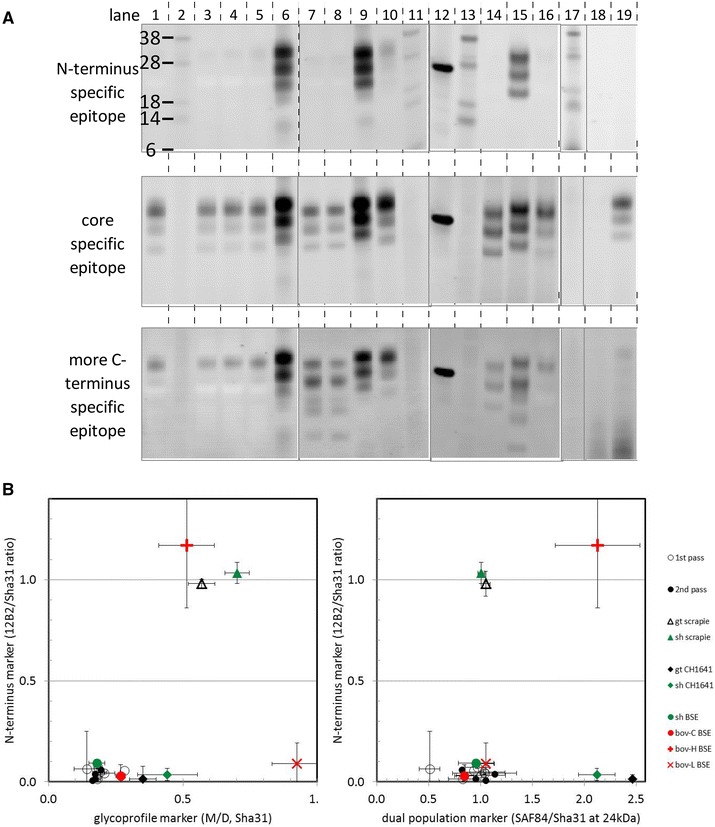Figure 6.

Western blot: triplex Western blot analysis of goat BSE brain stem samples with three antibodies on one membrane. Samples from orally challenged goats were analysed together with a set of different types of TSEs from goat, sheep and cattle to illustrate the classical BSE like character in the BSE-challenged goats. A Analysis with a mixture of three antibodies with different PrP specificities: N-terminus (12B2), core (Sha31) and C-terminus (SAF84, lanes 1–16; or F99, lanes 17–19). Lanes: 1, 3–5, 19 goat BSE material from respectively wt/wt 2nd pass, R/Q211 2nd pass, wt/wt 2nd pass, R/Q211 2nd pass, Q/K222 1st pass; lane 6, classical scrapie from i.c. challenged R/Q211 goat; lane 7, CH1641 scrapie from i.c. challenge in wt/wt sheep; lane 8 CH1641 scrapie from i.c. challenge in wt/wt goat; lane 9 natural scrapie from wt/wt sheep; lane 10 BSE from i.c. challenged wt sheep 1st pass; lanes 14–16 respectively bovine C-type BSE, H-type BSE and L type BSE; lane 18, non-challenged goat material. Applied tissue equivalents were 0.5 mg, or (in lanes 3, 4, 14–16 and 19) 1 mg. Lanes 2, 11, 13, and 17, mol mass markers are indicated with their kDa; in lane 12, 15 ng rec-ovine PrP (wt). For linear epitope specificities of the antibodies, see paragraph Biochemical analysis of the Methods section. B Dot plots showing the TSE-type markers of individual samples derived from the antibody signals of PrPres in triplex-WB. Each symbol represents the average signal ratio obtained from a triplicate analysis per individual sample (bars for the standard deviations). All orally challenged goats yield a typical C-BSE pattern for the markers N-terminus, glycoprofile and dual population independent of genotype and passage (1st or 2nd). The 12 analysed goat samples from the BSE challenges were: from 1st pass two wt/wt, two I/M142, three R/Q211, and one Q/K222 cases (open circles); from 2nd pass three wt/wt, and one R/Q211 cases (closed black circles).
